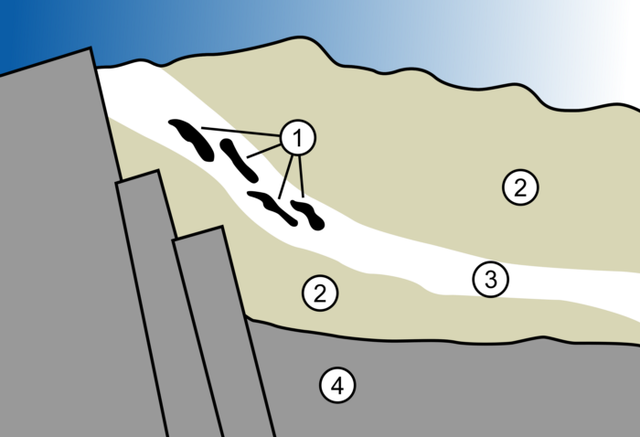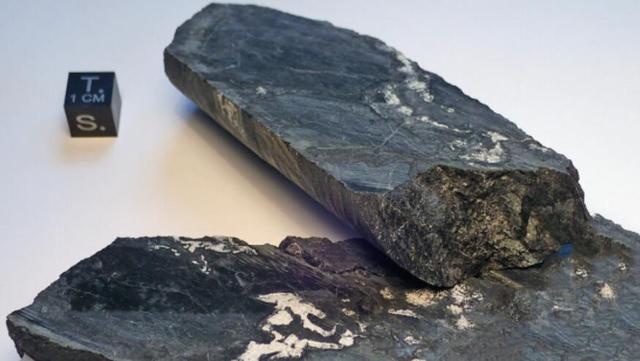Prehistoric civilization have always been the talk of the town, and it's no wonder - after all, humans have been around for so short a time in the history of the planet that if we were to compress the history of the planet into a single day, then humans would probably only appear in the last two minutes of that day. In the past, there have been frequent claims of the discovery of suspected prehistoric civilization, the most notable of which would be a two-billion-year-old nuclear reactor.
The story begins in 1972, when the uranium enrichment plant in pierrelatte, france, took samples containing uranium from several mines. When physicist francis perrin analysed a sample of uranium hexafluoride from the oklo mine in gabon, africa, using a mass spectrometer, he found that the ratio of uranium-235 to uranium-238 in this sample was significantly lower than normal - in other words, the sample contained was much less.

We are all familiar with what uranium-235 can do, so this discovery soon attracted strong interest from interested parties and it did not take long for a team of researchers, comprising a number of scientists from related fields, to arrive at the oklo mine site to investigate. The researchers extracted additional mineral samples from several areas of the site, which were analysed and found that the uranium-bearing minerals here did contain much less uranium-235 than normal, but that this was not the work of modern humans.
Further research showed that a significant proportion of nuclear fission products (including five xenon isotopes, neodymium-143, ruthenium-99 and some transuranic elements) were also present in these apparently low uranium-235 samples, which, according to dating, were some two billion years old, and the researchers then came to the surprising conclusion that there were multiple nuclear reactors at the oklo mine the remains of these nuclear reactors, which ceased to operate 2 billion years ago.

(the map shows a summary of the geological composition of the area, where "1" Is the location of the nuclear reactors; "2" Is the sandstone deposit; "3" Is the layer of uranium-bearing minerals; and "4" Is a granite-based bedrock)
So how should these 2 billion year old nuclear reactors be explained? Is it possible that earth's civilisation is really on a continuous reincarnation? Prehistoric civilisation enthusiasts are certainly positive about this, and they give three main reasons for this.
- A sufficiently high concentration of uranium-235 is a necessary condition for a nuclear reactor.
- Generally speaking, when a u-235 nucleus fissions, it produces fast "Fast neutrons" With an average energy of 2 mev, while other u-235 nuclei cannot effectively trap the "Fast neutrons", which would lead to a chain of nuclear fission. The nuclear reactor must be equipped with a neutron moderator to ensure the normal operation of the nuclear reactor.
- Nuclear reactors need to be in a controlled state, otherwise uncontrollable chain reactions will occur.
Fans of prehistoric civilisations believe that all three of these points require manual operation, so these 2 billion year old nuclear reactors should prove that civilisations existed on earth long before humans.

Of course, the scientific community does not readily subscribe to the idea that civilisations on earth are reincarnating, and after more in-depth research, scientists have come up with explanations based on natural phenomena.
The first is the concentration of uranium-235, a radioactive isotope with a half-life of 704 million years, which means that the amount of uranium-235 in uranium-bearing minerals is halved every 704 million years.
According to scientists, 2 billion years ago, the proportion of uranium-235 in the uranium-bearing minerals at the oklo site could have reached 3.7% of the uranium content, which is already above the minimum required for a nuclear reactor (3%), and with the help of oxygen, water and bacteria, this uranium-235 could have been enriched to start a nuclear fission reaction.
Then there is the issue of neutron moderators. Scientists believe that the low terrain where these reactors are located makes it easy for water to collect there, and it is this water that acts as a neutron moderator.

As for the control of the nuclear reactor, scientists explain it this way: As the nuclear fission reaction takes place, the water here continues to evaporate due to the high temperatures. When the water is evaporated, the uranium-235 here cannot effectively capture the "Fast neutrons", and the reactor gradually stops operating.
When the reactor cools down, the water re-collects here (because of the lower terrain) and the fission reaction continues until the water is evaporated again. It is important to note that this is actually borne out by the fact that subsequent studies have shown that these nuclear reactors have been in intermittent operation for hundreds of thousands to millions of years.
As you can see, the explanation given by the scientists is reasonable, meaning that nuclear reactors from 2 billion years ago do not prove that civilisation existed on earth long before humans.

On the other hand, if earth civilisations were really reincarnating, and some of them had reached the technological level to be able to build nuclear reactors, then they would have left a lot of artificial traces in the earth's strata, but we have never found anything definite in this regard, so we can also presume that prehistoric civilisations would not have existed and that human civilisation would have been the the only civilisation that has existed so far.


